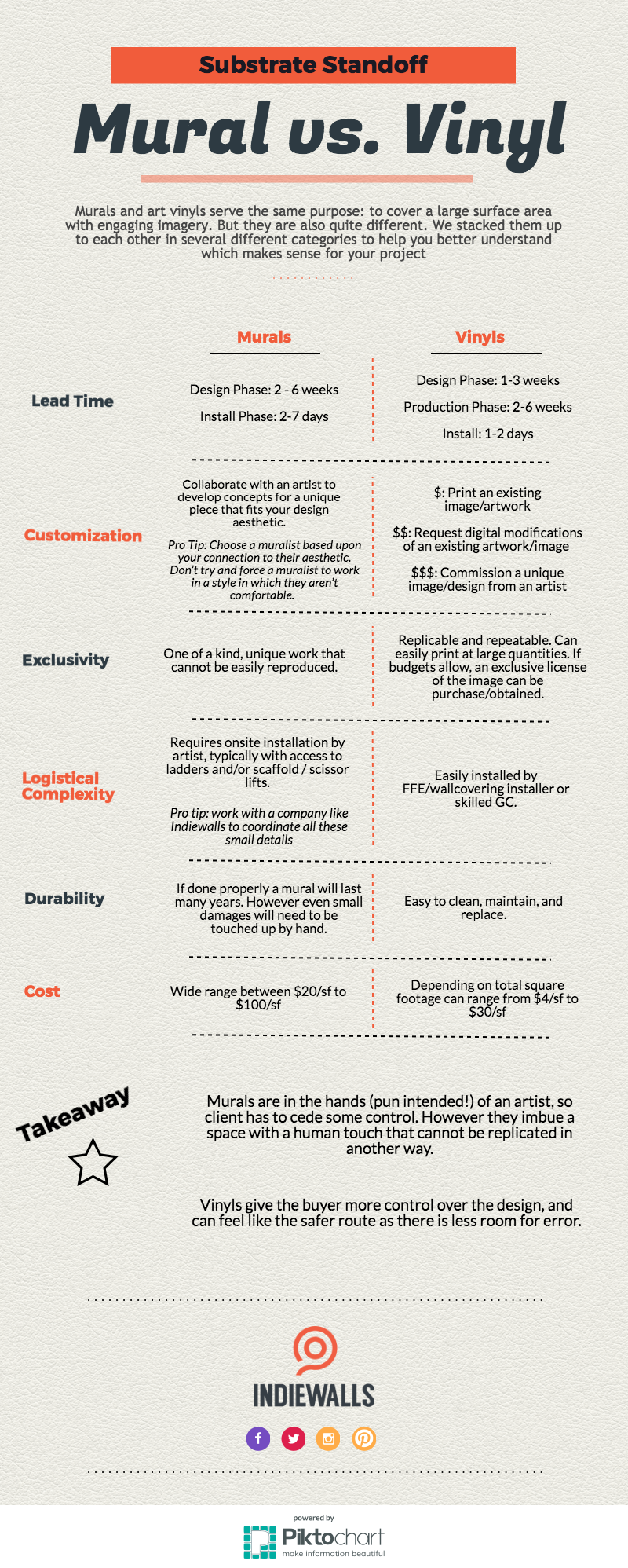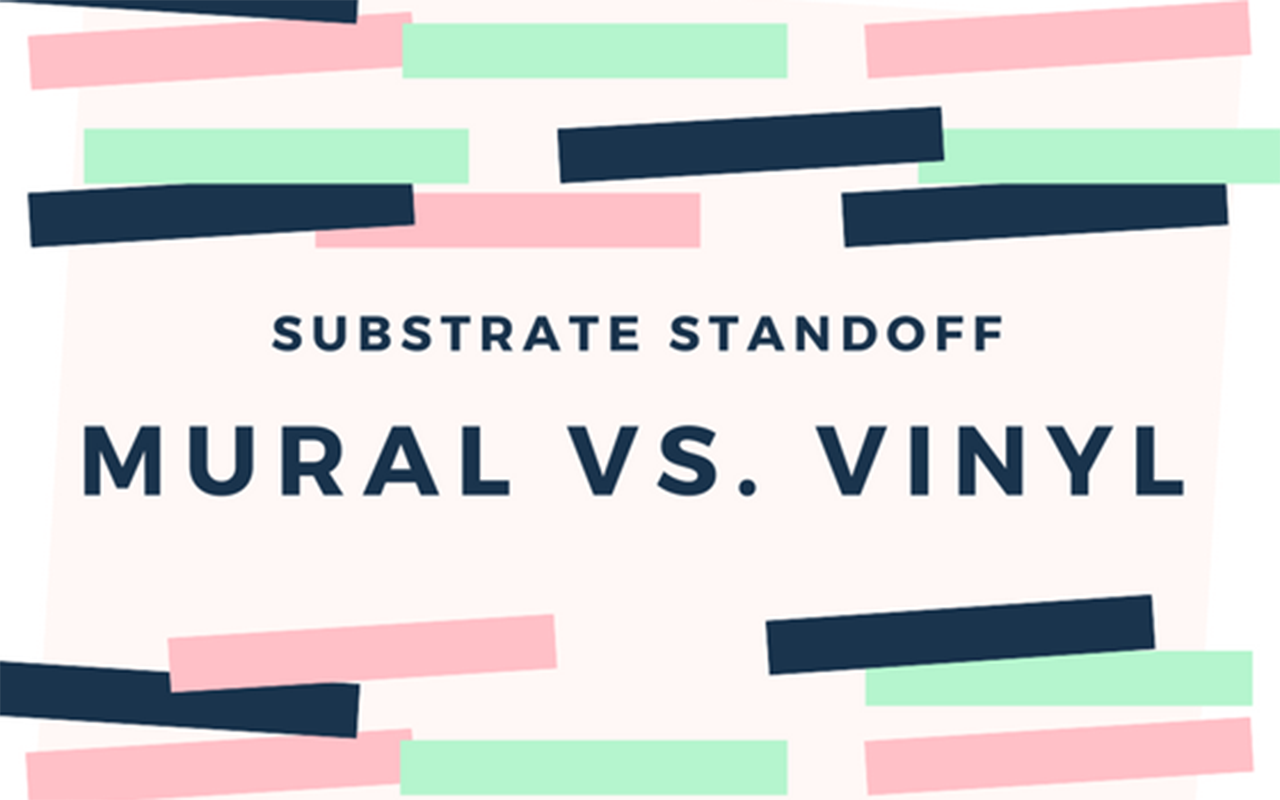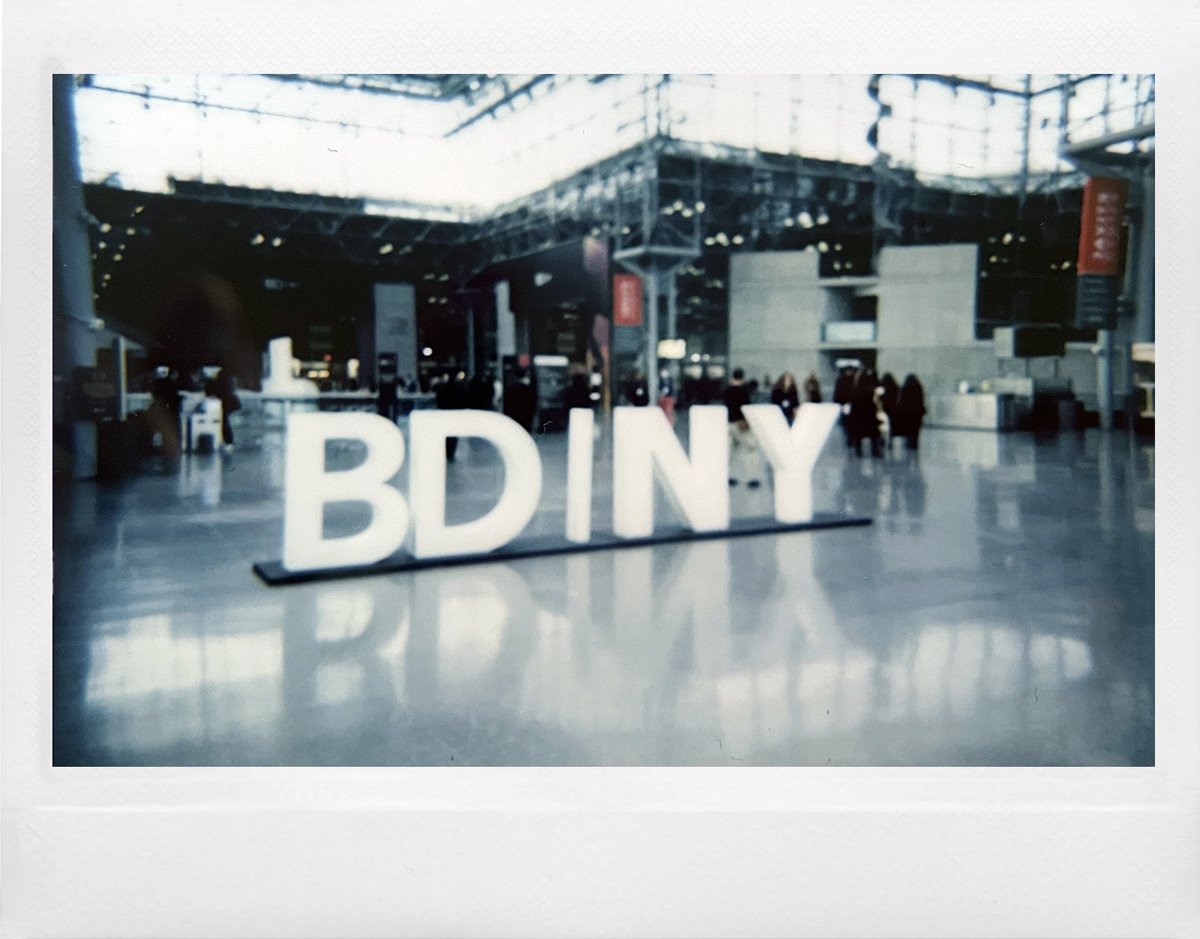Murals and art vinyls serve the same purpose: to cover a large surface area with engaging imagery. But they’re also quite different. We stacked them upto each other in several important categories to help you better understand which makes sense for your project.
At a Glance

In Detail
Murals, by definition are unique and custom commissioned. Murals lend themselves well to both community engagement activations and artistic collaborations, especially in cities where local muralists play a key role in the city’s artistic identity.
Murals can be created with different types of paint, and can incorporate mixed media materials such as paper prints by wheatpasting. Since they are created onsite by the artist, there must be a level of trust in the artist’s ability and vision. Choose a muralist based on your connection to their aesthetic and skills. Don’t try to force a muralist to work in an alternative style.
A commissioned mural consists of a design phase and an installation phase. During the design phase (2-6 weeks), artists submit sketches, color samples, and mockups for approval. Once the design is finalized, the site must be prepped with the necessary construction equipment (fork lift, ladder, scaffolding) and ventilation before install begins. Depending on the scale of the mural, install can take between 2-7 days and can require anywhere from 1-4 people.
Art Vinyls, also referred to as wallcoverings, are coated wallpaper on which a digital image is printed. They are usually coated with an acrylic vinyl or polyvinyl chloride, substances that make them resistant to grease and moisture and are thus easy to clean and durable. Their durability makes them popular for high traffic areas.
Since vinyls are created from a digital file, they allow for client customization in advance of production. Clients can license an already existing image or can have an image custom made specifically for a project. Files can be digitally edited to meet color and composition requirements by either the artist or the consultant.
There are many different types of wall vinyls so clients have flexibility in ground material and print texture. After all production logistics are confirmed, a strike off is printed before full production to ensure all requirements are met.
Vinyls are easily produced for scale and quantity making them fast to replace and replicate.
Conclusion
Murals and vinyls are both great options that will result in engaging spaces. The ultimate decision comes down to a balance between cost, aesthetic, and time.




